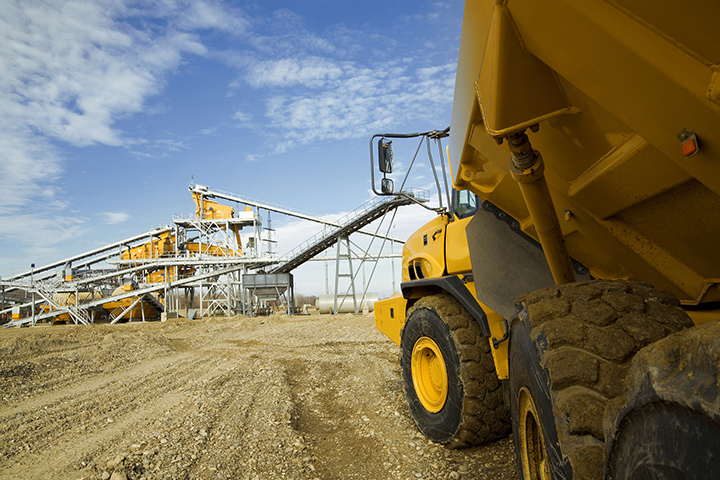How Can Technology in Mining Protect the Environment?
Rapid advances in technology innovation, including automation, digitization and electrification, are fundamentally changing how the mining sector operates.
Rapid advances in technology innovation, including automation, digitization and electrification, are fundamentally changing how the mining sector operates.
These new technologies reshaping the sector include autonomous vehicles, remote operating centres, automated drilling and tunnel-boring systems, machine learning and more.

How can these new technologies help the mining sector become more environmentally sustainable? This was the focus of our event, New Technologies: The future of mining in the Americas. Marina Ruete, IGF’s coordinator for the Latin America and Caribbean region, explains more below.
What is green technology?
Green technology refers to technology that limits or reverses the effects of human activity on the planet.
In mining, green technology refers to technology that will reduce carbon emissions in operations and mitigate adverse environmental impacts. It includes the use of minerals and metals that support a transition to low-carbon technologies such as solar panels or wind power.
How does technology impact mining operations?
Technology can have a number of impacts on mining operations, including safety and productivity, environmental protection and opportunities for women.
Safer working conditions through improved underground communication, automation, more sophisticated mineral and metal transportation, and emergency response measures are achieved by integrating technology into mining projects.
Technological advancements in mining are also making operations more productive. This can be seen in the use of robotics operating 24 hours a day, real-time monitoring of minerals and metals through mines and processing plants, and using simulations at the mine design stage to test different solutions before implementation.
Technology in mining also helps eliminate the excuse of this sector being too dangerous for women.
Innovation also supports environmental conservation. Through improved waste management efforts, tailings are being processed more efficiently. The mining sector will also play an important role in the circular economy. Using renewables such as solar energy to power vehicles will also ensure a more sustainable mining sector.

Technology in mining also helps eliminate the excuse of this sector being too dangerous for women, since more jobs will be operated at a distance from the rock face. We hope to see employment gender gaps reduced thanks to technology.
What should mining companies keep in mind when adopting new tech?
The mining sector should carefully consider new trends in traceability and collaboration when adopting innovative technologies.
Mining companies are under a magnifying glass. Consumers are demanding sustainability, not only from manufacturers but along the entire supply chain, from the moment the mineral or metal is found to when it appears in the products they are purchasing.
Inclusive work with different sectors and actors within those sectors is key to implementing technology in mining responsibly.
Collaborating with other sectors, such as universities, governments and civil society, is also important. Companies are realizing that universities can bring valuable research and insight, government can provide incentives, suppliers can provide innovative offers, and buyers can explain their needs.
Countries such as Chile are using the cluster method of grouping multi-sectoral organizations together—such as a university, mining company and government department—to achieve the benefits of technology. Inclusive work with different actors within those sectors is key to implementing technology in mining responsibly.
Mining companies also need to consider the social impacts of new technologies—particularly those, like automation, that replace low- and medium-skilled workers. Typically filled by locals, those jobs are an important part of the social license to operate. The mine of the future will probably have fewer total jobs, and the new jobs created will probably be less beneficial for communities impacted by mining activity. IGF is working on these issues with its New Tech, New Deal project.
How can developing countries improve environmental sustainability through tech in mining?
Developing countries often receive foreign direct investment for large-scale mining operations. This foreign investment is arriving with more technology to increase productivity during the mining concession period. Governments need to remain up to date in the latest innovations and changes brought to their jurisdictions to ensure that increased productivity comes with balanced with economic and social benefits over the life of the mine.
On a positive note, governments will be able to ensure high environmental standards within mining operations by incentivizing certain technology. This can include giving targeted tax incentives to mining companies, creating research and education opportunities for their local workforce on the technology, and facilitating the achievement of local intellectual
You might also be interested in
Leveraging Digital Infrastructure for Mining Community Resilience
This report explores the socio-economic impacts and potential of new technologies in the mining sector.
IGF Case Study: Decarbonization of the Mining Sector
Case studies from Chile, Indonesia, and South Africa that delve into the role of the mining sector in efforts to reduce greenhouse gas (GHG) emissions.
Modernizing Artisanal and Small-Scale Mining
How will emerging technologies affect the artisanal and small-scale mining sector?
Financial Benefit-Sharing Issues for Critical Minerals: Challenges and opportunities for producing countries
Exploring nuances in the key features of critical minerals and the new challenges and opportunities they present to fiscal regulation.
